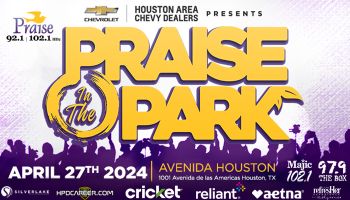As far as dress rehearsals go, this weekend’s NCAA South Regional at Reliant Stadium is providing an intriguing glimpse of what’s to come.
With 45,505 college basketball fans crammed into the Texans’ home venue Friday night to watch Baylor oust Saint Mary’s and Duke dispatch Purdue, attendance here was the second-highest ever for a preliminary-round session in the NCAA Tournament.
There’s plenty of basketball yet to be played in this tournament, including today’s showdown between Baylor and top-seeded Duke for a trip to the Final Four in Indianapolis, but attention is already shifting to 2011, when Houston will be at the center of the college basketball universe as host of the Men’s Final Four.
Via: Chron.com
For a city that has hosted the Super Bowl, the World Series and NBA and MLB All-Star games in the past decade, the Final Four represents one more opportunity for a national showcase — and potential economic windfall.
Greg Ortale, president and CEO of the Greater Houston Convention and Visitors Bureau, expects the area to see some $38 million in extra income this weekend thanks to what amounts to home games for the third-seeded Bears and their green-and-gold-clad fans.
“That’s very good, and we’re definitely pleased with that,” he said.
The real jackpot, however, awaits next spring. Ortale, who’ll be at Lucas Oil Stadium in Indianapolis for this year’s Final Four, anticipates 75,000-plus passing through the Houston turnstiles in 2011. Houston will again host the Final Four in 2016.
“We should at least double what we did in 2008 next year,” Ortale said.
San Antonio’s windfall
Houston and Reliant Stadium last hosted an NCAA regional in 2008, employing the “mid-field” court configuration and elevated seating systems that now serve as the model for all Final Fours. The attendance then was similar to Friday’s.
“We were north of 38 (million dollars),” Ortale said. “We verified it through a third party, and we think it’s a conservative estimate. We prefer to err on the side of being conservative instead of overstating.”
The last time a Final Four was held in Texas was 2008, when the regional at Reliant fed into the national semifinals and championship game played at the Alamodome in San Antonio.
Susan Blackwood, executive director of San Antonio Sports, estimated the 2008 Final Four’s windfall to the Alamo City at $61 million, a boost from when San Antonio hosted in 2004 and made $55 million.
Blackwood is not surprised by the increase. It’s simple, she said.
“San Antonio is very convenient to get around in, and we’re able to entertain,” Blackwood said. “The only frost you’ll ever find is on your margarita glass.”
‘A multiplier effect’
The numbers sound big, but when you’re dealing with a billion-dollar economy, it’s essentially a drop in the bucket, said Barton Smith, an economist at the University of Houston.
“It’s relatively small, relatively modest in terms of the Houston economy,” he said. “The only event that has had any significant impact is or was the rodeo — it’s long-lasting, and it draws a lot of out-of-state people.”
The real benefit, Smith said, is fresh money.
“The Final Four brings outside people into Houston, and that’s what stimulates a regional economy,” Smith said.
“Usually, with locals, it’s circulating dollars. But when you bring outside dollars into Houston, those dollars become Houstonians’ income, and then some, and it’s re-stamped — it’s a multiplier effect.”
There was evidence of that in 2004, when the Super Bowl was held in Houston. Ortale isn’t sure when, or if, the NFL’s premier event will return to the Bayou City, but it was certainly a financial success six years ago.
Super Bowl XXXVIII, also held at Reliant, spurred $120 million to $180 million in direct spending here, based on an estimate of 80-90,000 fans each spending between $1,500 and $2,000. Those figures take into account four nights of lodging, as more than 85 percent of fans who attend the Super Bowl are from out of state, and 70-90 percent arrive via plane.
Vying for billionaires
Still, the GHCVB passed on the last opportunity to bid for the Super Bowl — partly because of the costly price of doing so ($250,000 for video and other persuasive bid materials), and also because the selection process is somewhat random.
“There is no set criteria to why they make the bids, so basically you’re in a popularity contest with 32 billionaires,” Ortale said, referring to the circle of NFL owners who decide by vote who gets the Super Bowl. “If there is a less predictable group than 32 billionaires, I don’t know what it is. But we’d love to have it back.”
Until then, expect college basketball to dominate Reliant when the Texans and rodeo are dormant. And that’s not a bad thing, according to Greg Shaheen, NCAA senior vice president of basketball and business strategies.
In terms of direct spending, Shaheen expects Houston to score a haul similar to that anticipated this week in Indianapolis — north of $60 million. Some cities take in as much as $100 million for a Final Four.
“There will be 72,000 (fans) in Lucas Oil (Stadium) and we expect 100,000 in the marketplace,” he said. “Two-thirds of our membership is within a day’s drive, and it’s accessible by air and car.”
The South is not much different. So when it came time to consider future sites, even with 2011 already locked in, Reliant Stadium made too much sense to not return in 2016, he said.
That, too, is a good thing, according to Smith, the economist.
“It’s a collection of these events on a regular basis that brings in outside dollars and also reinforces Houston’s image as a major player amongst America’s major cities,” he said.













